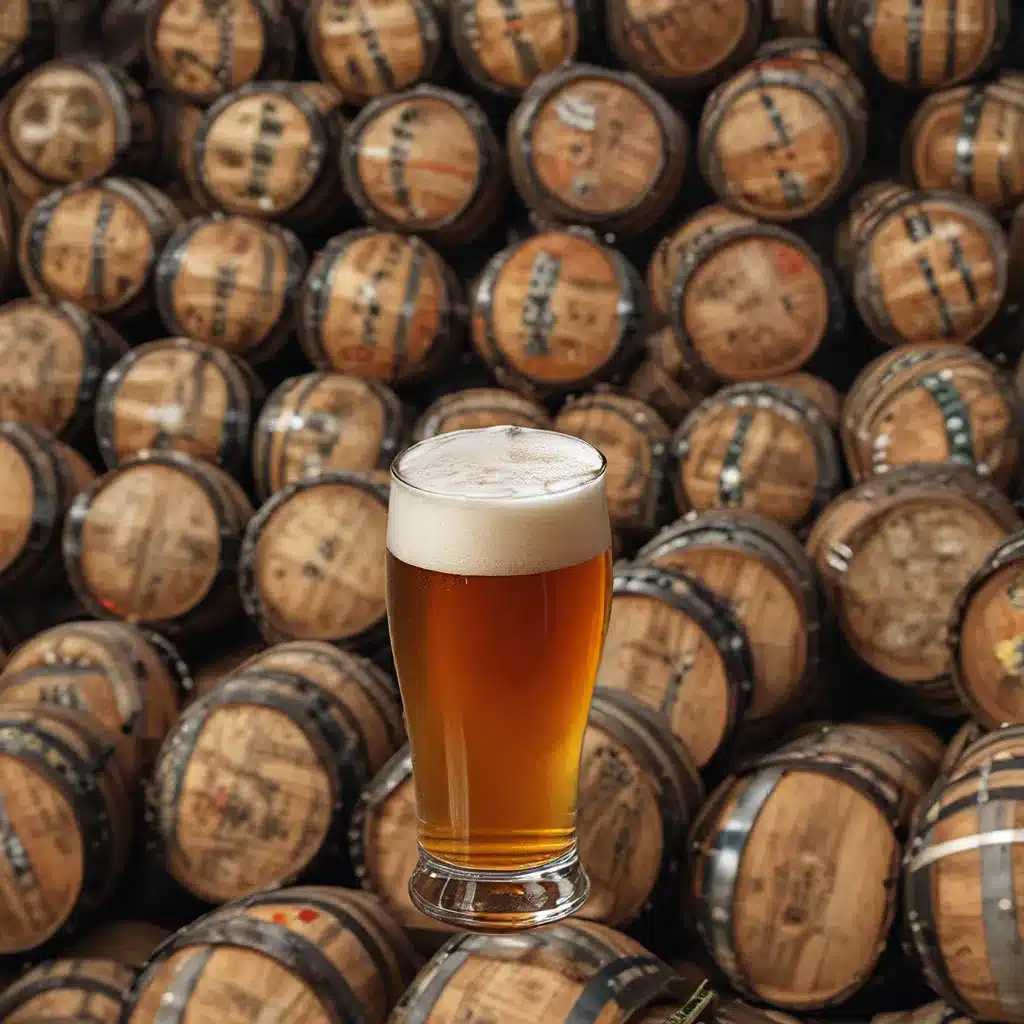
An in-depth look at how the beer industry has evolved to keep up with changing consumer preferences over the centuries.
You know, when I first started working at The Up & Under Pub, I’ll admit I didn’t know a whole lot about the history of beer. I mean, I knew it had been around for ages, but I didn’t realize just how far back the story of this beloved beverage goes.
As I dug into the archives and chatted with some of our brewery partners, I was amazed to discover just how much the world of beer has transformed over the centuries – from the earliest Neolithic brewers to today’s craft beer aficionados. It’s a tale of innovation, adaptation, and the human ability to take a good thing and make it even better.
From Primitive Brews to Refined Ales
If you rewind the clock all the way back to around 3500-3100 BC, you’ll find some of the earliest known evidence of beer production in central Europe. These proto-brewers were using a pretty basic setup – just water, malted barley, and wild yeasts. But even with those humble beginnings, they were able to create beverages that were a far cry from the watered-down swill that sometimes passes for beer today.
As archaeologists have uncovered, these early ales would have had a bold, complex flavor profile – much more akin to today’s craft brews than the mass-produced lagers that dominate the modern market. And the importance of beer in those ancient societies can’t be overstated. It wasn’t just a refreshment – it was a central part of religious rituals, social gatherings, and even the economy.
Fast-forward a few millennia, and you start to see the first inklings of the beer we know and love today. The introduction of hops in the 9th century AD was a game-changer, adding an unmistakable bitterness and aroma that became a signature of the European brewing tradition. And as the Middle Ages rolled on, monasteries emerged as centers of brewing innovation, experimenting with new ingredients and techniques.
The Birth of the IPA and the Rise of Craft Beer
Of course, the story of beer doesn’t stop there. In the 18th and 19th centuries, the Industrial Revolution ushered in a new era of mass production and distribution. Suddenly, beer could be enjoyed by the masses, not just the elite. And with the rise of the British Empire, a new style of beer was born – the India Pale Ale (IPA).
As the legend goes, IPAs were developed to withstand the long voyage from England to the far-flung outposts of the empire. The higher hop content acted as a natural preservative, keeping the beer fresh and flavorful even after months at sea. And the bold, resinous character of these IPAs quickly won over drinkers around the world.
But the story doesn’t end there. In the latter half of the 20th century, a new wave of beer enthusiasts started to push back against the bland, homogenized lagers that had come to dominate the market. These craft beer pioneers rediscovered the joys of complex, full-flavored ales – and they weren’t afraid to experiment with unconventional ingredients and brewing techniques.
Adapting to Changing Tastes
Now, as we move deeper into the 21st century, the beer industry is once again in the midst of a profound transformation. Consumers are increasingly seeking out unique, artisanal products that offer a sensory experience beyond just quenching their thirst. And brewers are rising to the challenge, creating beers that push the boundaries of what’s possible.
From hop-forward IPAs to sour ales to barrel-aged stouts, the modern beer drinker has a dizzying array of options to choose from. And as the climate continues to change, brewers are having to get even more creative to ensure the long-term sustainability of their craft.
As the authors of a recent Nature Communications study put it, “A predicted decline in hop yield and alpha content of 41.8% and 20.31% by 2050 CE respectively calls for immediate adaptation measures to stabilize an ever-growing global sector.”
But I have no doubt that the beer industry will rise to meet this challenge, just as it has time and time again. After all, this is an art form that has endured for millennia, constantly evolving to suit the tastes and preferences of each new generation of drinkers.
Finding the Perfect Pour for Today’s Palates
So what does the future hold for beer? Well, if history is any indication, it’s going to be an exciting ride. We may see a continued emphasis on local, sustainable ingredients. Or perhaps a resurgence of traditional styles that have been forgotten for too long. Maybe even the development of entirely new beer categories that we can’t even imagine today.
But one thing is certain: the brewers and beer lovers of tomorrow will be just as passionate and innovative as those who came before. They’ll be driven by a deep appreciation for the rich history and cultural significance of this beloved beverage – and a relentless desire to push the boundaries of what’s possible.
And who knows? Maybe one day, someone will walk into The Up & Under Pub and discover a completely new style of beer that captures the zeitgeist of their era, just like the IPAs of the British Empire or the craft beer revolution of the 20th century. It’s an exciting prospect to ponder, and I can’t wait to see what the future has in store.
So the next time you raise a glass, take a moment to appreciate the incredible journey that beer has taken to get to where it is today. It’s a story of resilience, creativity, and the power of human ingenuity to take something as simple as water, barley, and yeast and transform it into a beverage that has captivated the hearts and palates of people all over the world.
Cheers to that!

